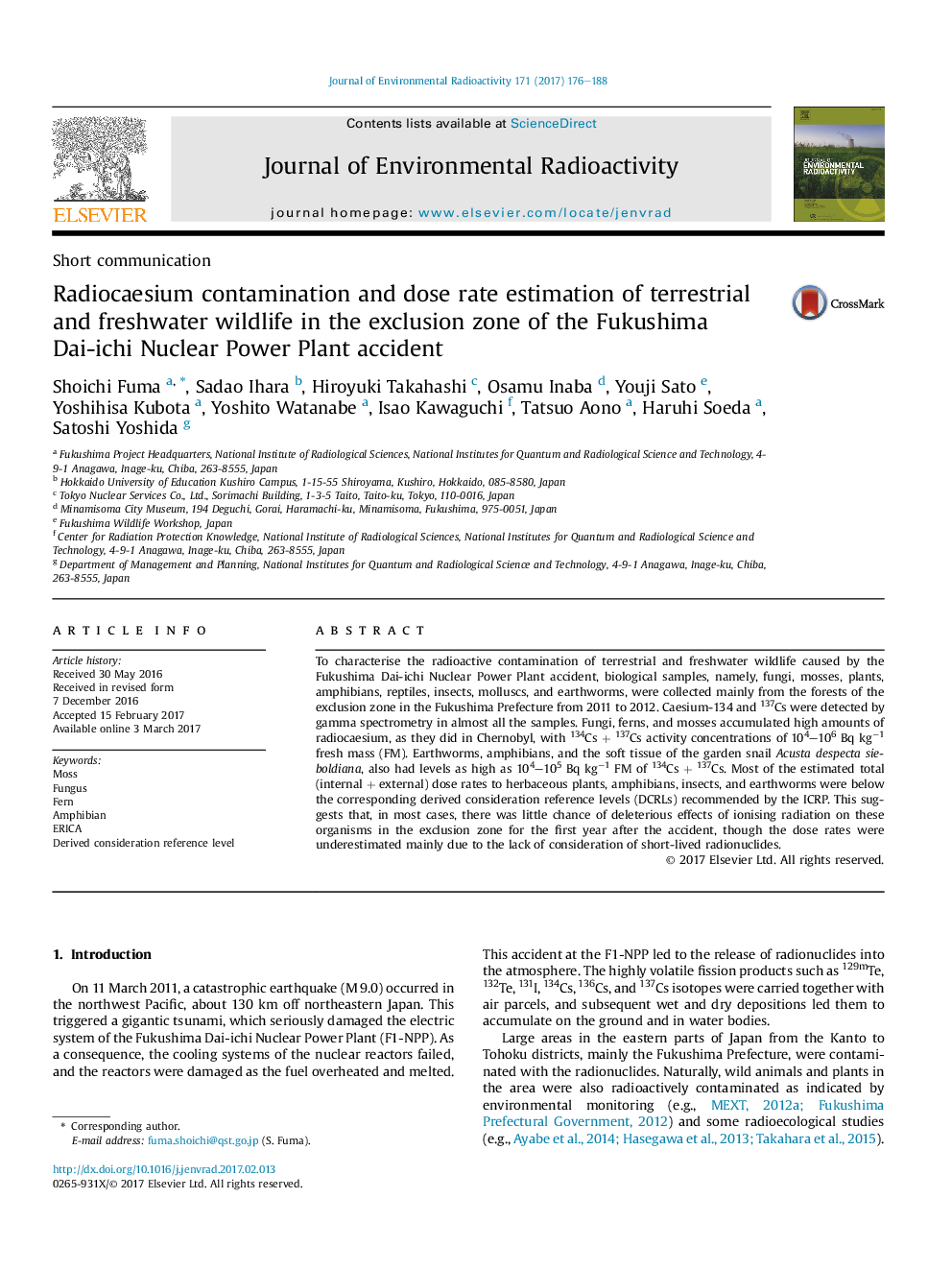| کد مقاله | کد نشریه | سال انتشار | مقاله انگلیسی | نسخه تمام متن |
|---|---|---|---|---|
| 5477594 | 1521568 | 2017 | 13 صفحه PDF | دانلود رایگان |
- Radioactive contamination in wildlife was studied in the Fukushima exclusion zone.
- Mosses had the highest levels of accumulated radiocaesium.
- Fungi, ferns, snails, earthworms, and amphibians were also highly contaminated.
- Most of the estimated dose rates to wildlife were below the ICRP's DCRLs.
To characterise the radioactive contamination of terrestrial and freshwater wildlife caused by the Fukushima Dai-ichi Nuclear Power Plant accident, biological samples, namely, fungi, mosses, plants, amphibians, reptiles, insects, molluscs, and earthworms, were collected mainly from the forests of the exclusion zone in the Fukushima Prefecture from 2011 to 2012. Caesium-134 and 137Cs were detected by gamma spectrometry in almost all the samples. Fungi, ferns, and mosses accumulated high amounts of radiocaesium, as they did in Chernobyl, with 134Cs + 137Cs activity concentrations of 104-106 Bq kgâ1 fresh mass (FM). Earthworms, amphibians, and the soft tissue of the garden snail Acusta despecta sieboldiana, also had levels as high as 104-105 Bq kgâ1 FM of 134Cs + 137Cs. Most of the estimated total (internal + external) dose rates to herbaceous plants, amphibians, insects, and earthworms were below the corresponding derived consideration reference levels (DCRLs) recommended by the ICRP. This suggests that, in most cases, there was little chance of deleterious effects of ionising radiation on these organisms in the exclusion zone for the first year after the accident, though the dose rates were underestimated mainly due to the lack of consideration of short-lived radionuclides.
Journal: Journal of Environmental Radioactivity - Volume 171, May 2017, Pages 176-188
